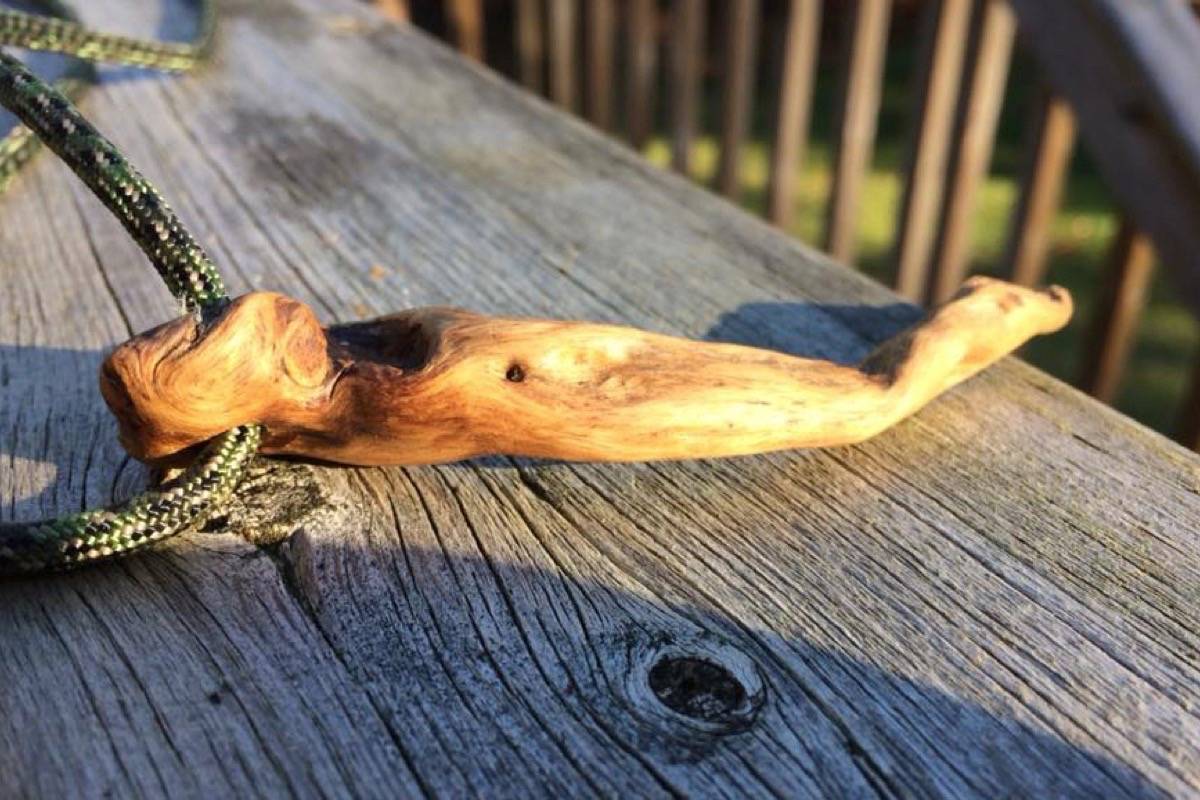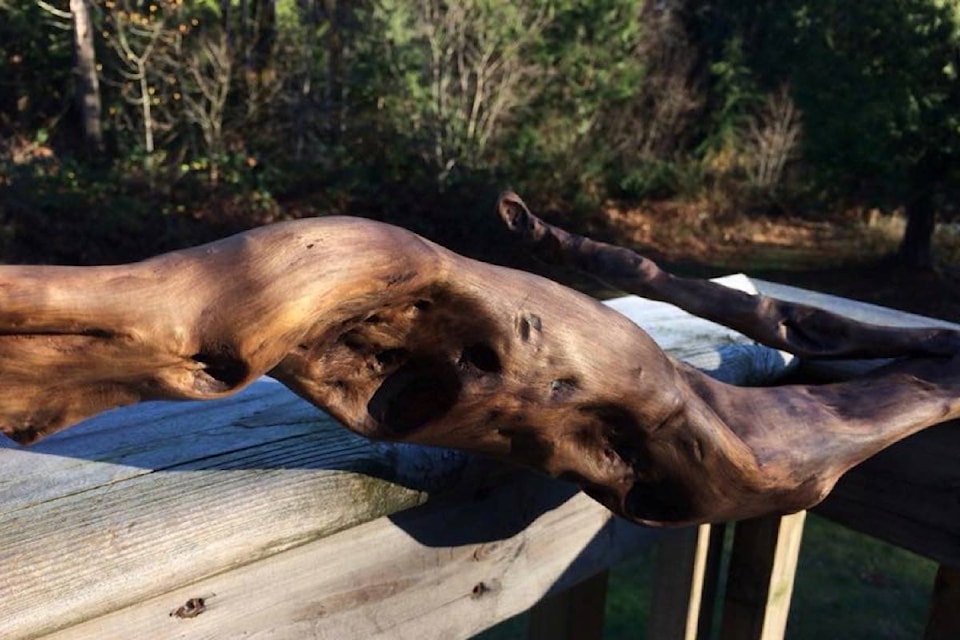Some artists take inspiration from nature to create their pieces. But one Sts’ailes Band reservation resident is turning the preservation of nature into its own art form.
Brendan Kinshella, like many others, has used unearthed roots for walking sticks when he’s out in the wilderness for many years. But two months ago he was at the Chehalis River with his wife and started noticing the beauty of the simple, naturally formed cedar tree roots. He didn’t know what he would do with them yet, but Kinshella decided to take a few of them home.
“I think it’s fascinating because it’s something that’s not really seen,” he says. “Roots are one of those things that aren’t intended to be seen by people. I have two on my desk [and] those were never seen for [however] long that tree was growing…now it’s a centre piece.”
Kinshella’s approach art is unconventional in it’s simplicity, something that makes it even more intriguing to those that have purchased the roots since he started posting them online. He says the roots, from years of growth, are already works of art and his role is to refine them.
“Some people put candles on them or draw on them,” he says. “I like just enhancing what’s already there… All the cool little nooks and crannies from where the [roots] have been creeping around the rocks.”
One of the pieces Kinshella sold had seven rocks embedded in the root, one of them so much so that it was barely visible. “The root thorn has pretty much absorbed the rock,” he says.
Kinshella takes the unearthed roots from fallen or dead trees only and says he has to find them at the perfect time before the root begins to rot. He first tries to get all the moisture out, drying out each piece to avoid any rotting. After that he picks off the skin, before sanding it to a smooth finish and finally staining the cedar for a glossy finish.
“I don’t carve into it or anything, I just try to sand it down and if there’s a crack in it, cut it down a little bit,” he says, adding that the process is calming and helps him cope with severe depression and anxiety.
“When I’m sitting down and picking all the pieces of loose debris out of there and using a toothbrush to clean it up, cutting it and sanding it, and trying to see what it wants me to do…it calms me down,” he says. “I try not to just force myself on it, I just try to go with it naturally.”
“It’s a great way to pass the time. I mean hey, they’re free and otherwise they’d just sit out there and rot. And they’re just too cool.”
Kinshella says his pieces are a way to honour the lives of the trees they come from.
“I would never take it from a live tree,” he says. “It’s a way of respecting and honoring the tree that’s passed on by [saying] you’re not forgotten.”
Kinshella regularly posts his pieces online in Facebook groups like Life in Agassiz, but anyone interested in a root piece can find him on Facebook under the name “Thorn Kinshella.”

